DC Comics is trying something new. In the wake of their Rebirth initiative, the publisher has rapidly expanded its content to include diverse new imprints such as Young Animal, Wildstorm, Jinxworld, Wonder Comics, Black Label, Ink, and Zoom. As their lineup expands, it can be hard to figure out what to pick up each week. That’s what our team is here to help with, every Wednesday, with the DC Round-Up!
THIS WEEK: The Flash starts a four issue “Year One” story to revisit Barry’s earliest experiences with the Speed Force.
Note: the reviews below contain spoilers. If you want a quick, spoiler-free buy/pass recommendation on the comics in question, check out the bottom of the article for our final verdict.
 The Flash #70
The Flash #70
Storytellers: Joshua Williamson & Howard Porter
Colorist: Hi-Fi
This week’s Flash is the first issue of a “Year One” story, which is always exciting. If you’re not familiar with the concept, it’s basically a retelling of the character’s origin, with updates, as an interlude to the ongoing storyline. The earliest and most classic example was in 1987, when Frank Miller spent four issues of Batman exploring what Batman’s first year on the job was like in Gotham City. It served as an opportunity for Miller to introduce several new elements into the caped crusader’s history and to cement a few others. Since then, we’ve had Year One story arcs for Wonder Woman, Robin, Green Arrow, and a dozen others. Even Guy Gardner got one, if you can believe that.
In this case, the Flash’s Year One arc is presented as a multi-issue flashback that Barry Allen is experiencing as a result of the final few pages of issue #69. In it, a supervillain called Steadfast blasted the hero with a wave of Still Force energy in order to make him go back and relive this pivotal year in his history. Barry apparently has to remember something about the start of his run (pun totally intended) in order to SAVE THE MULTIVERSE. Why is the multiverse always at stake in these Flash books? Anyway, this is a story about what happened after Barry got struck by that lightning.
The issue opens (and closes) on Barry seeing a future version of himself. Time travel is a big theme in this and all Flash stories, but the core concept of this arc seems to be hope.
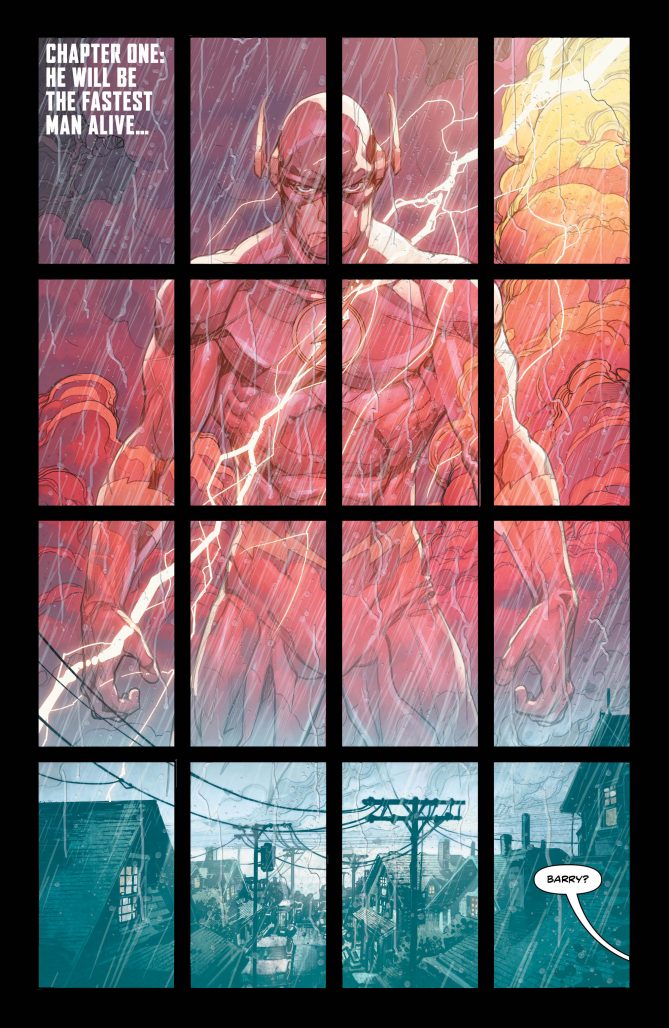
One of the best parts of this issue is the portrayal of Iris West. Iris is barely even a love interest at this point, but it’s not for lack of trying. She’s portrayed here as an alpha go-getter type who’s either very interested in Barry or just wanting him to believe it so she can satisfy her journalistic need for a scoop. Either way, Barry’s not in the headspace for romance, though it looks like Iris isn’t about to take no for an answer. Cue the lightning.
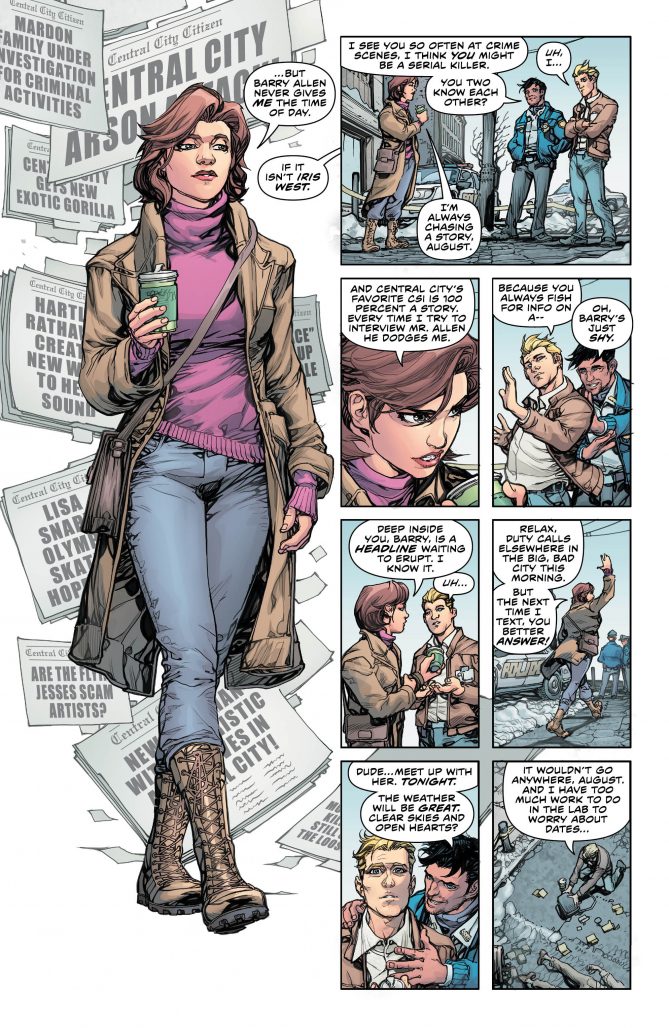
The romance would have to wait, as Barry was in a coma for months after the lightning strike and then woke up with super-speed. The rest of the story shows how he attacks the problem of his new abilities with the mind of a scientist; probing, testing, and adjusting. Throwing himself into the work. The melted boots began to pile up in a corner of his house as he experiments with his powers in an effort to understand and control them. And as he starts to let go and enjoy himself with this newfound freedom, we can see that gleam of hope returning to Barry’s eyes.
Cue the lightning.
This arc features the triumphant return of artist Howard Porter, who brings these pages to life along with beautiful colors by Hi-Fi. I love how Porter rarely uses a traditional white gutter, but makes each page unique with backgrounds and overlapping panels. The last time this creative team was together was the larger than life “Flash War” storyline almost a year ago (the multiverse was at stake). And whatever artists he collaborates with, Joshua Williamson is delivering one hell of a Flash run. He clearly understands what’s fun about Barry, Iris, and our poor boy Wally. I hope he stays on this book for years.
Verdict: Buy
 Batman and the Outsiders #1
Batman and the Outsiders #1
Writer: Bryan Hill
Artist: Dexter Soy
Colors: Veronica Gandini
Letters: Clayton Cowles
Batman doesn’t play well with others. At least, he used to not. There was a time — not long ago — when Bruce Wayne only relied on Bruce Wayne. You remember this guy. He would speak to other heroes only in grunts or to bark out orders. Robins had to beg for admission onto the team and were accepted begrudgingly. Batman once disagreed so strongly with a Justice League decision that he quit on the spot and assembled his own superhero group. That’s right: he is such a bad team player that he went and created a new team. He even called them The Outsiders, as if to drive the point home. We love this maverick Batman.
But he’s been mellowing out a lot lately, hasn’t he? I don’t know if it was caused by Catwoman’s calming influence, or maybe just an over-accumulation of Robins. But Bruce has been a lot more family oriented in recent years.
Comics shops have long used the term “Bat family” to mean all of the Batman-related comic book titles. As in: Detective Comics is a book in the Bat family of books. These days, the term Bat family has taken on a meaning inside of the story as well. Bruce has a genetic son now, as well as the adopted ones. He enjoys a close relationship with Barbara, Alfred, Cassandra, Duke, even Jason at times. His son has playdates with Superman’s son. He has a dog (and a cow!) and ALMOST got married. Our man is settling down to the family life.
So why did he just start up a black-ops team called the Outsiders?
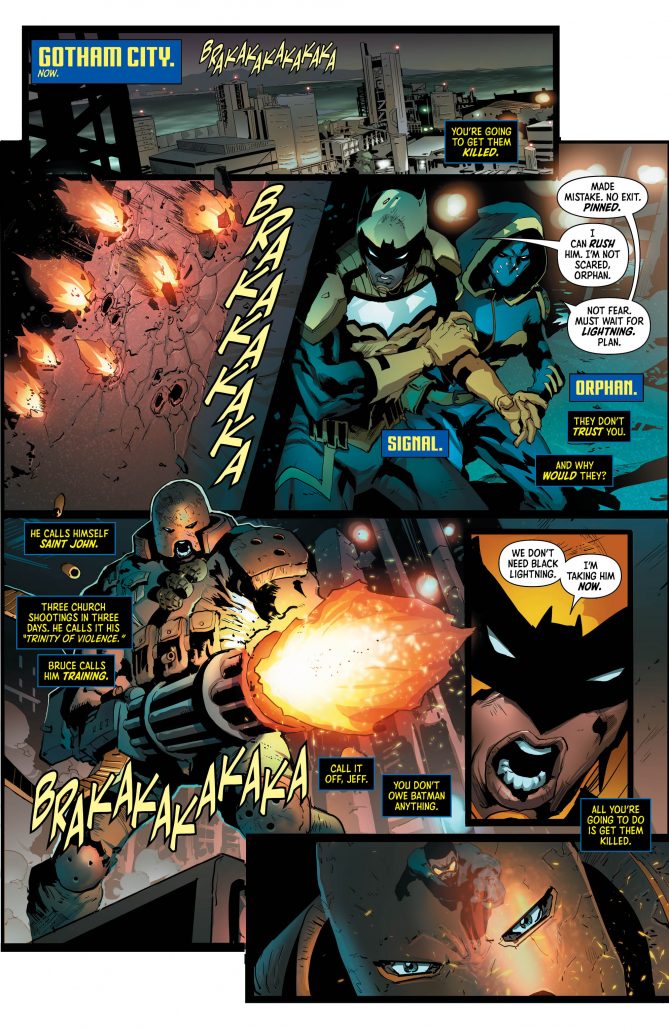
In this first issue of the new series, Jefferson Pierce, a.k.a. Black Lightning, is struggling to lead the new team. Some of the members are dealing with raw emotions, so tempers are running hot. Jefferson spends half of his time worrying that the team won’t follow his lead (he’s a Metropolis guy, not Gotham) and the other half worrying that he’ll lead them into trouble. Eventually he does the smart thing and finds a co-captain in Tatsu Yamashiro, who goes by the name Katana. Between the two of them, Tatsu and Jefferson have their hands full with the two younger members who have been on the receiving end of those assassination attempts.
Duke Thomas is a Robin-esque figure who goes by the name of The Signal. Unlike most of the Bat family, the young man has honest to goodness superpowers. His body has the ability to process light differently than us normals, which he can use to track enemies or perceive hidden details about crime scenes. Duke is still recovering from the recent attack that left him burned and rattled, and his short fuse is making things tense on the team. The other young member, Cassandra Cain who now goes by Orphan, has always been a little bit damaged herself. To be fair, she was raised by assassins under severely abusive conditions, so she gets a pass. Cassandra speaks only rarely and in broken, incomplete sentences. She isn’t particularly well-adjusted and doesn’t always act predictably. This new team is going to go through some rough patches.
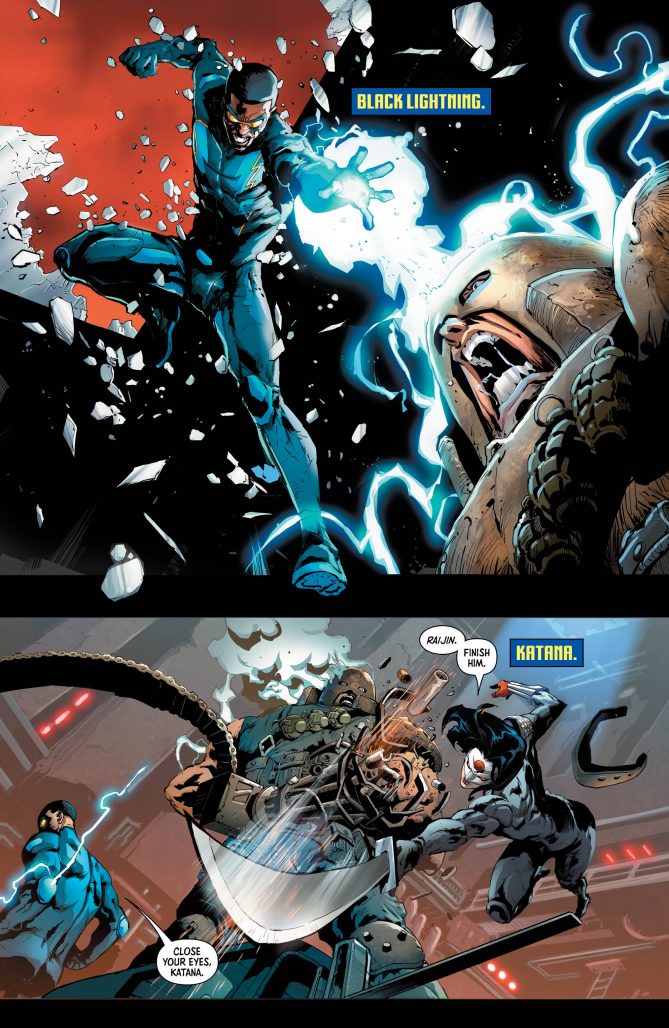
All in all, it’s a great premise. This is the most I’ve ever been drawn to an Outsiders book. The plot is enticing, the action is cinematic, the colors are gorgeous. Each character has emotional beats that feel as if they are building to something deeper. Batman and the Outsiders promises to explore the question: is Batman better off alone, on the outside looking in, or is it okay for him to rely on friends and family? At the end of the day, does Bruce Wayne really trust anyone other than Bruce Wayne?
Verdict: Buy
Miss any of our earlier reviews? Check out our full archive!


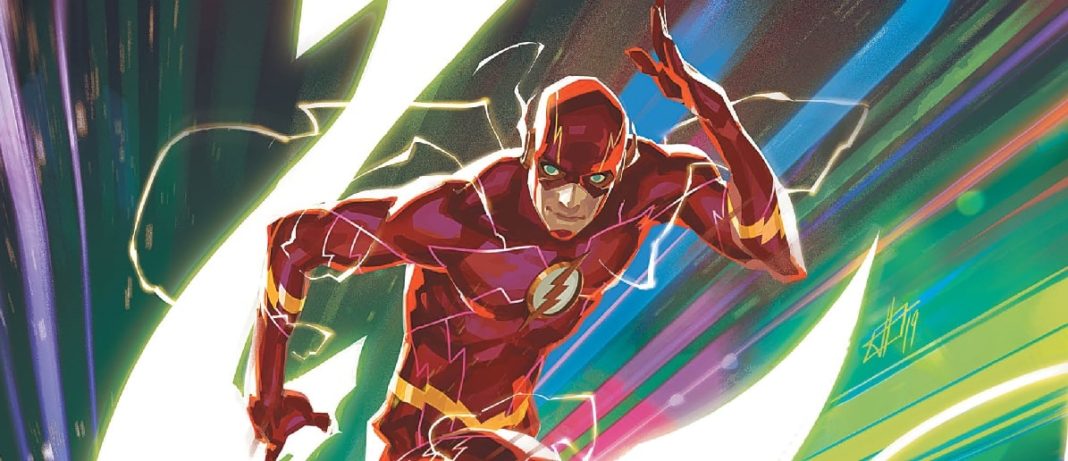
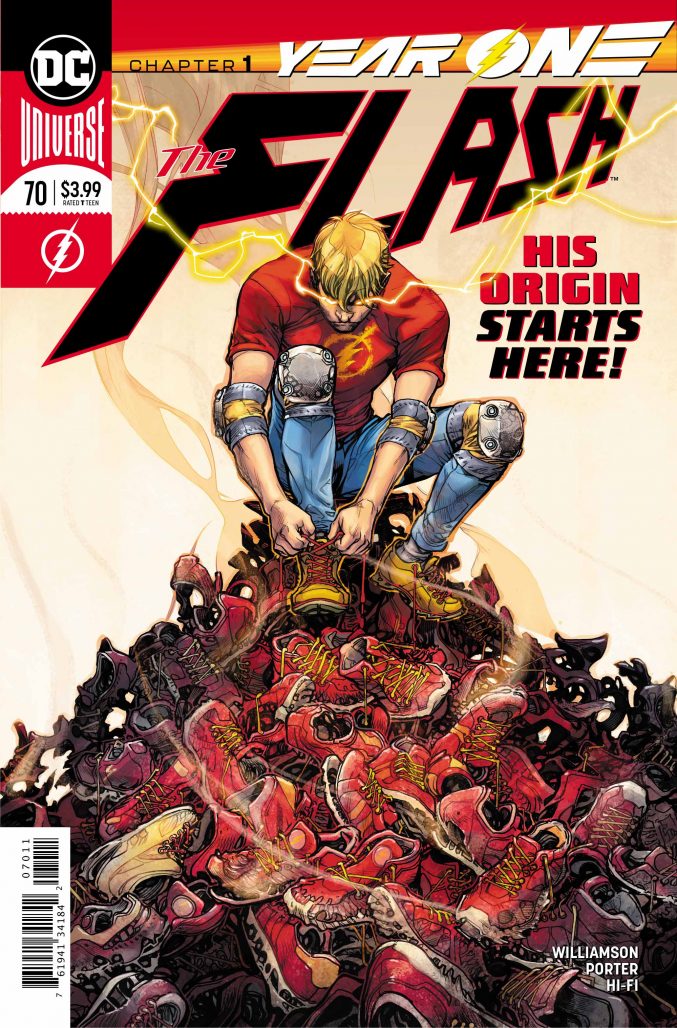 The Flash #70
The Flash #70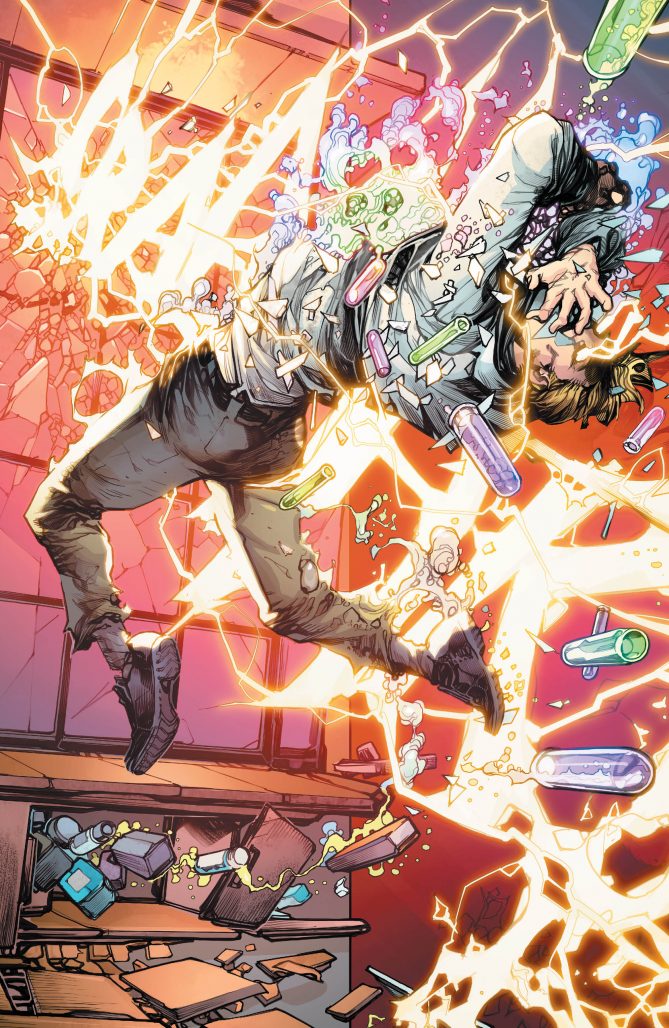
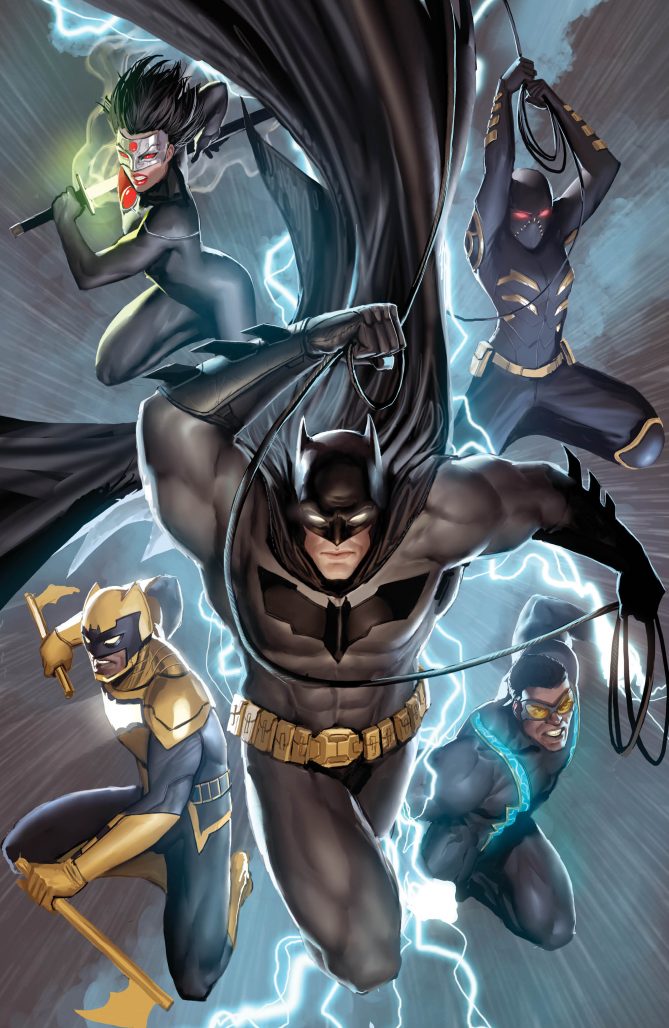 Batman and the Outsiders #1
Batman and the Outsiders #1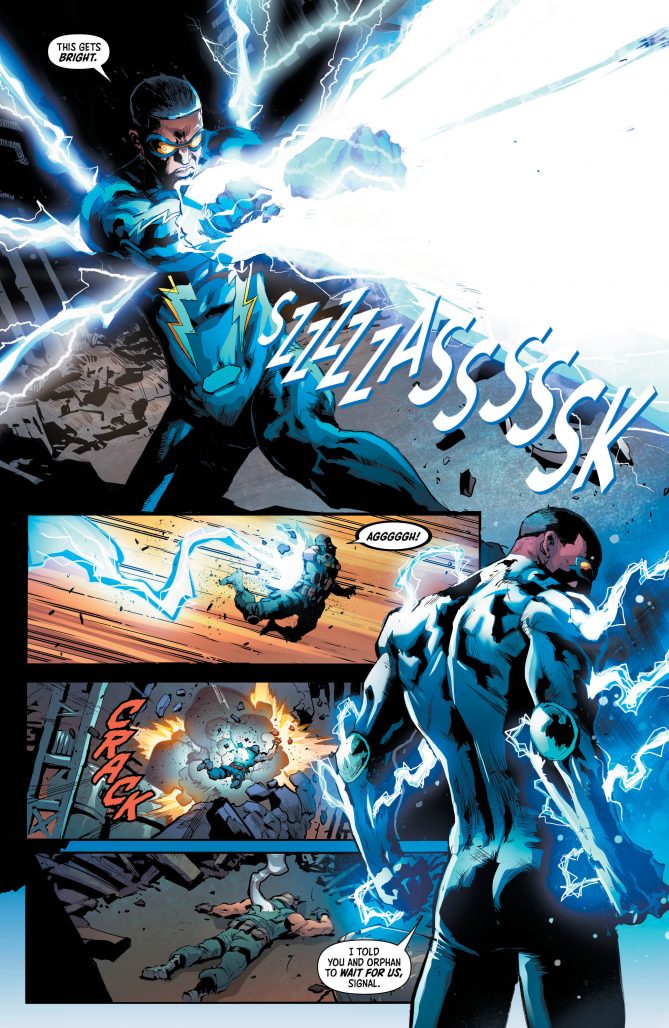
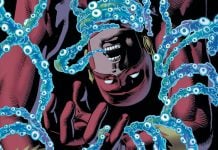
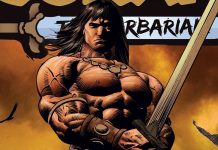




I thought the Flash was absolutely terrific. Such an enjoyable and self-confident issue.
Comments are closed.